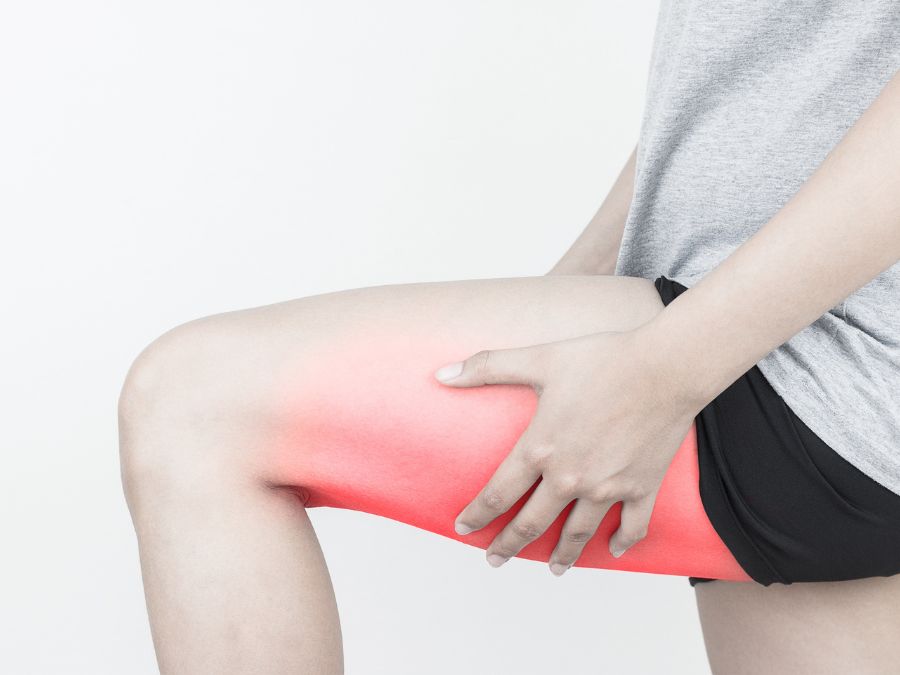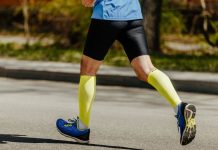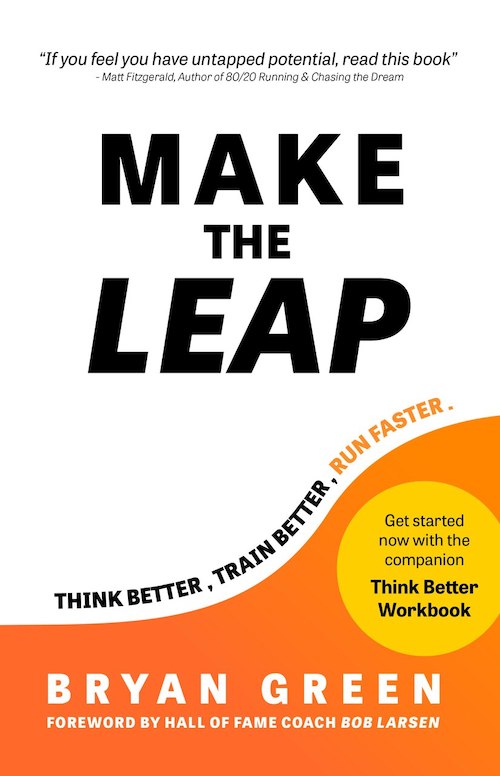The hamstrings are a group of three muscles—biceps femoris, semitendinosus, and semimembranosus—that run along the back of the thigh. These muscles play a key role in movement, supporting actions like walking, running, and jumping. When the hamstrings are tight, they can feel stiff, reduce flexibility, and limit mobility. Tightness may sometimes accompany symptoms such as cramping, pain, swelling, bruising, tenderness, or redness.
Hamstring tightness is often most noticeable after periods of rest, such as the morning after a workout. Persistent tightness can also heighten the risk of injury.

When gearing up for a run, stretching sore or tight muscles feels like the natural remedy. However, for runners dealing with tight hamstrings, stretching may not be the best solution. Often, tight hamstrings result from being over-lengthened due to other muscle imbalances, making additional stretching potentially counterproductive. Instead, focusing on strengthening opposing muscles, like the quads and glutes, can be the key to relief.
Here, we’ll explore the primary causes of tight hamstrings and why they occur, as well as provide expert-backed tips on prevention and treatment to keep you running strong.
What Causes Tight Hamstrings?
Tight hamstrings often stem from several related issues:
1. Insufficient Muscle Strength
Weak glutes are another culprit behind tight hamstrings. The glutes are essential for hip extension, but when fatigued, they shift this burden onto the hamstrings. According to Dr. John Vasudevan, M.D., from the Penn Medicine Running and Endurance Sports Program, smaller muscles, such as the piriformis and quadratus femoris, may also strain from overcompensation, causing hamstring discomfort.
2. Misaligned Pelvis
Runners frequently experience an imbalance between their hamstrings and quadriceps. The quads, located at the front of the thigh, are generally stronger than the hamstrings, contributing to a forward tilt in the pelvis. This anterior rotation shortens the hip flexors and lower back muscles while lengthening the hamstrings—pulling them into an overstretched state. As a result, the hamstrings tighten, increasing the risk of injury.
3. Excessive Tension on Hamstrings
When the pelvis is tilted forward, the hamstrings endure additional stress during each stride. The further they stretch when your leg swings forward, the more strain they experience, especially at the attachment site near the pelvis. This stress, compounded by running, can lead to painful conditions like tendonitis or even muscle tears.

Preventing and Treating Tight Hamstrings: 5 Essential Tips
Below are some expert-approved exercises and stretches to help prevent and alleviate tight hamstrings.
1. Stretch and Roll Your Quads and Hip Flexors
Tight quads and hip flexors can worsen hamstring tension. This standing quad stretch can help release them:
- Stand with feet hip-width apart.
- Bend your left knee, bringing your foot behind you, and hold it with your left hand.
- Slightly tilt your pelvis forward, engage your glutes, and move the knee back until you feel a stretch.
- Hold for 30 seconds, then switch sides.
2. Warm Up Your Spine with Cat-Cow Stretches
Warm up your back muscles with cat-cow stretches to relieve tension in the lower back:
- Start on all fours, knees under hips, hands under shoulders.
- Inhale, arch your spine, and look up, lowering your belly.
- Exhale, pull your belly button in and round your spine.
- Repeat several times.
3. Strengthen Your Core with Planks
A strong core supports better pelvic alignment and reduces strain on the hamstrings. Incorporate planks into your routine:
- Place your forearms on the ground, elbows under shoulders.
- Step your feet back, forming a straight line from head to heels.
- Engage your core and hold for 20-30 seconds.
4. Activate Glutes with Single-Leg Glute Bridges
Strengthening glutes and hamstrings can help prevent hamstring overuse. Try single-leg glute bridges:
- Lie on your back, knees bent, feet on the floor.
- Lift your right leg, keeping your foot off the floor.
- Drive through your left foot, lift your hips, and engage your glutes.
- Hold briefly, then lower.
- Repeat on each side for 3 sets of 10-12 reps, twice per week.
5. Perform Gentle Hamstring Stretches
If flexibility is an issue, a gentle hamstring stretch can improve mobility:
- Lie on your back and raise one leg, keeping it straight.
- Flex your foot and gently pull it toward your forehead.
- Hold for 30 seconds and repeat on the other side.
Conclusion
Understanding the underlying causes of tight hamstrings is essential for effective treatment. By strengthening supporting muscles and incorporating targeted exercises, runners can alleviate tightness and prevent injury. Make these exercises a regular part of your routine, and you’ll be ready to hit the ground running—hamstrings at ease.

























